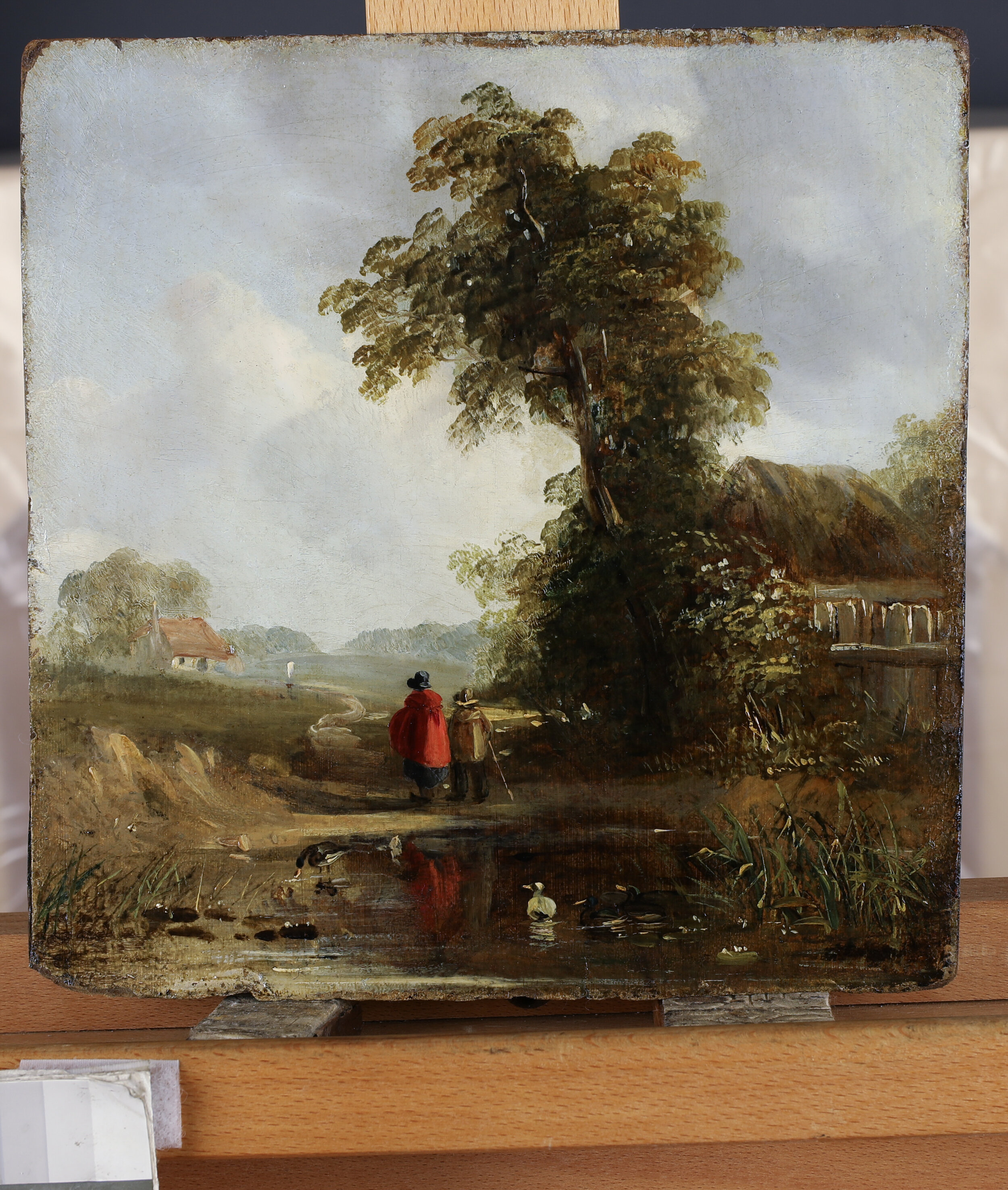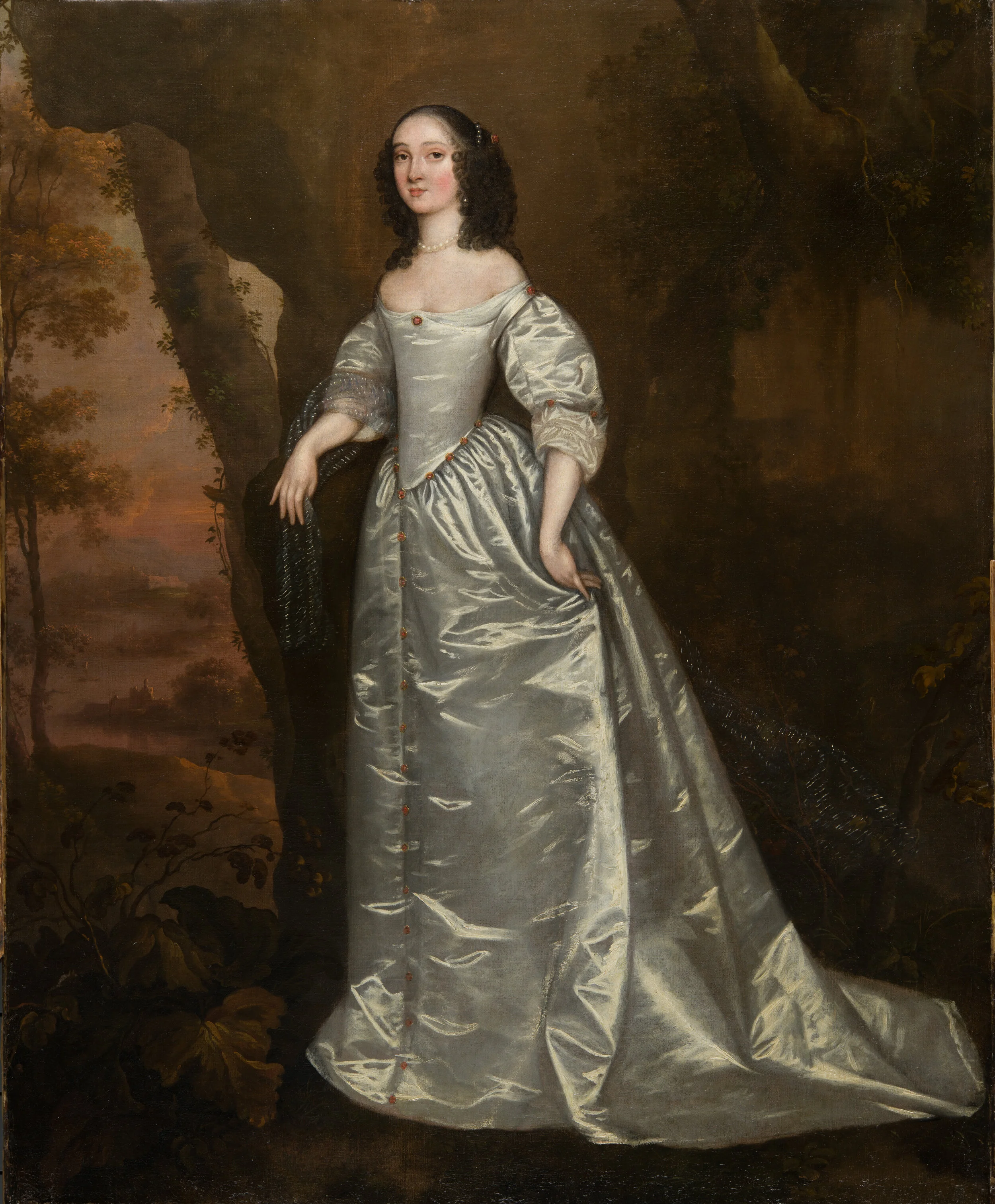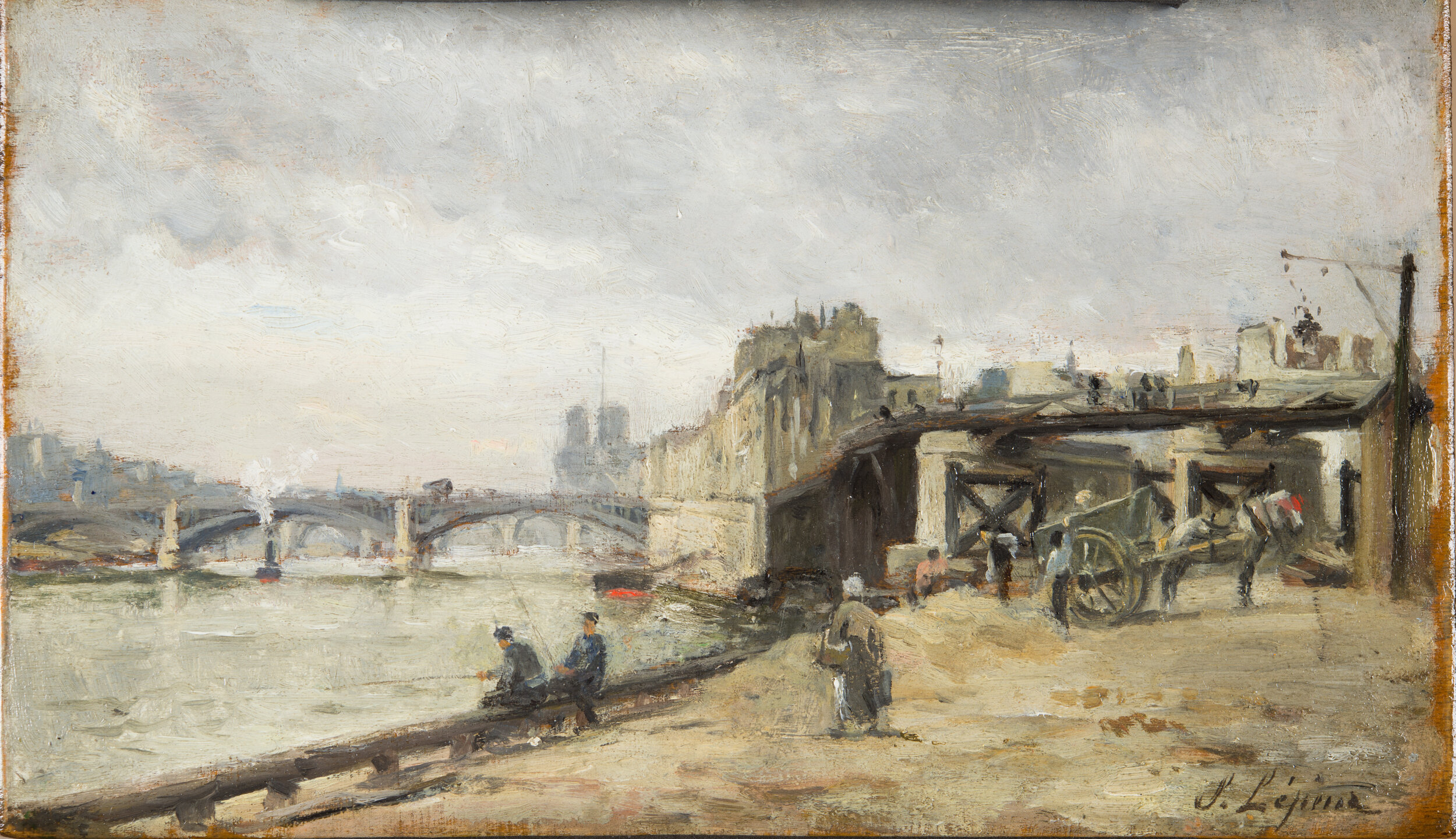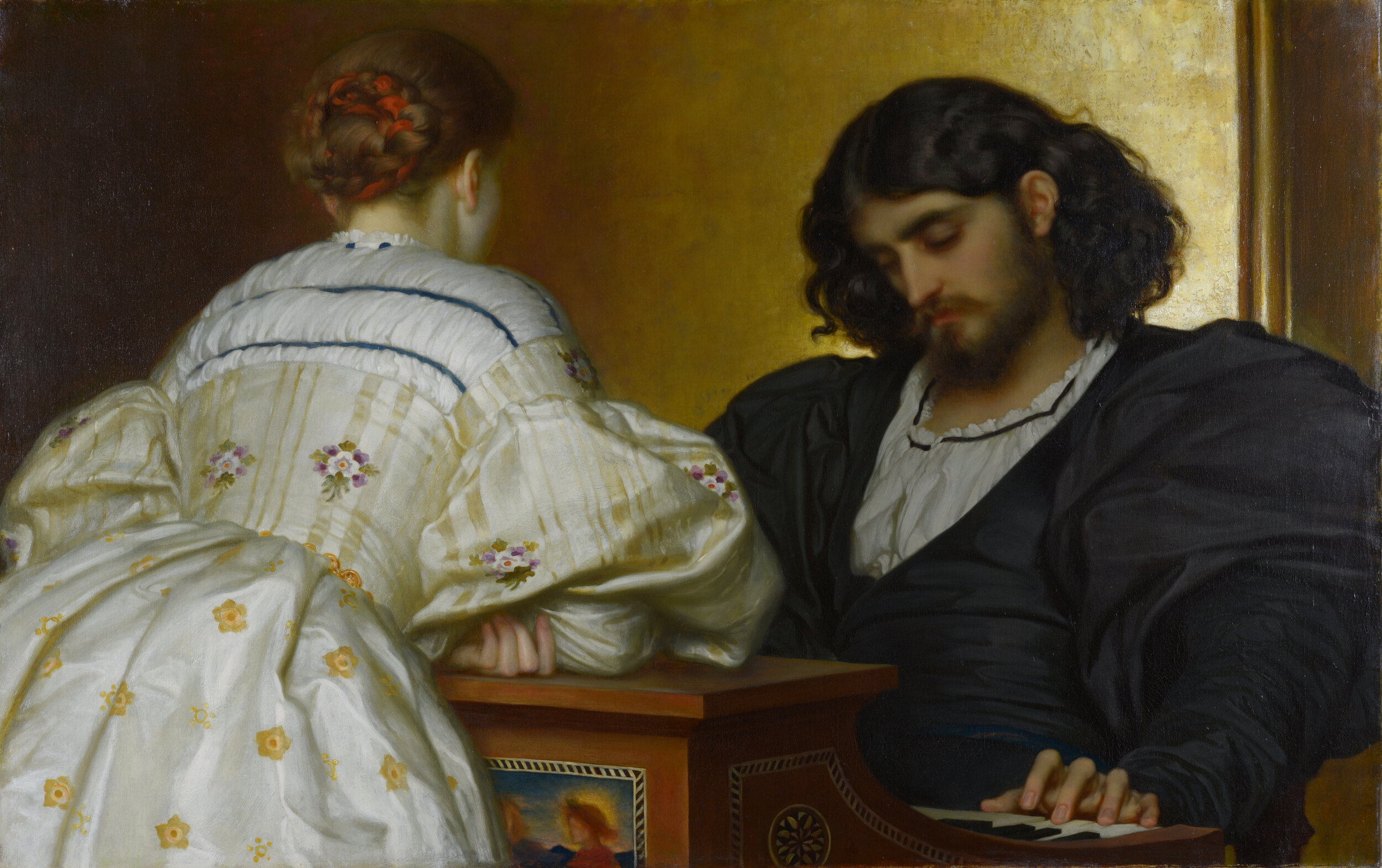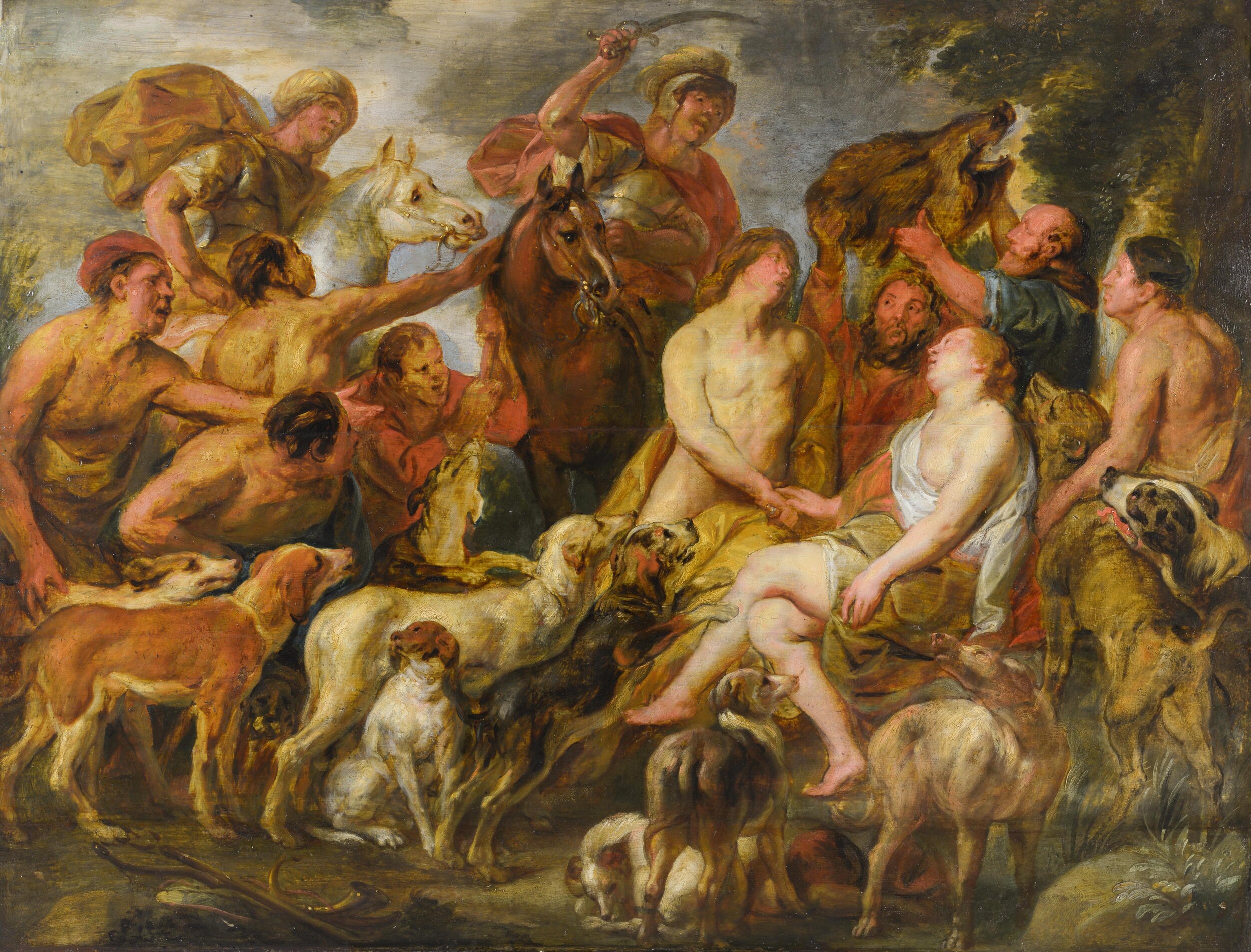GALLERY
A selection of recent works before and after treatment
‘La Bocca della verità’ by Michele Rocca (1675-1751)
treatment: surface cleaning, Varnish removal
Client: The Holburne Museum, Bath
The stone Bocca della Verità (‘Mouth of Truth’) in Rome is said to bite the hands off liars. This eighteenth-century Roman painting shows the moment of suspense as an unfaithful wife outwits this public lie detector. Her lover pretends to be mad and rushes up to kiss her as she approaches the statue. When asked if any man has kissed her other than her husband she answers ‘none but that madman just now’. She escapes with her hand and reputation intact.
‘jane xiii’ by sir Gerald festus Kelly (1879-1972)
treatment: surface cleaning
Client: Private collector, US
Our conservators breathed new life into Jane XIII and the exquisite fabric of her robe during a meticulous cleaning process removing dirt, varnish and historic retouching. The first step was to dust the painting on the front and reverse. After testing for removal of surface dirt, a very old, powdery, degraded varnish layer was found to be present on the surface, which had combined with several dirt layers. The varnish appeared to be very yellow and the remains were particularly evident in the interstices of the brush strokes. The uppermost layer of surface dirt was removed using adjusted water. Subsequent layers, including the old varnish and some old retouching, was removed using a Xanthan gel.
‘blackbird’ by mary fedden (1915-2012)
treatment: consolidation
When this poor blackbird arrived in our studio, it was certainly looking rather sorry for itself. Over the years, its feathers had been more than a little ruffled. Our initial condition report observed that the artist had thickly applied a very dry paint onto an unprepared shiny surface. There is a lack of cohesion between the paint layer and shiny support, causing large areas of the paint layer to peel away, with a few losses. If this picture was left untreated, the peeling areas of paint would eventually all fall off, disfiguring the picture.
Our conservators softened the raised paint and applied a suitable adhesive. The paint was then laid down. Very slight hairline cracks around the areas of cracking remained visible and these were filled, textured and retouched to reintegrate with the surrounding area. The whole of the painting was cleaned using a dry method.
Our client said: “It looks brilliant and it is lovely to have it back. Many thanks to you and your team. I am thrilled with how it has turned out.”
‘England Farewell: The emigrant’s departure’, 1864, by Thomas Brooks (1818-1892)
treatments: surface cleaning, consolidation, varnish removal, overpaint removal, structural repair, retouching
The painting arrived at the studio after suffering a small tear, visible in sky above one of the sailing boats on the horizon, with associated deformation of the canvas. Other condition issues were noted, for example the fact that the canvas tension was very slack, with the result that the stretcher bars had become imprinted onto the front of the canvas, leaving stretcher bar marks around the edge of the composition. The varnish layers were fairly discoloured, and small losses that had occurred in the past had been retouched with overpaint that was matte and mismatched. The artwork was surface cleaned to remove surface dust and dirt from the front and reverse. The canvas was tensioned, and then the tear was secured by consolidating the flaking paint, flattening the canvas, and then the torn threads of the canvas were carefully rejoined with a conservation graded adhesive. The yellow varnish layers were removed as well as the discoloured retouching. The loss around the area of the tear was filled and retouched to reintegrate it into the composition, as were the older smaller losses. A final layer of semi-matte protective was applied. It was very pleasing to see the artist’s intended weather condition brought back to light from under the layers of discoloured varnish, revealing his skill in depicting the bright light at sea on a stormy day.
‘cigaret’ by Katherine bernhardt (b. 1975)
treatment: tear mending
This artwork arrived at the studio with a small hole in the canvas, near the bottom edge in the centre. It appeared to be a puncture. The threads of the canvas were rejoined, thread by thread, under the microscope and secured with a suitable adhesive. Precise and minimal pin-point retouching was then carried out to the area of the tear where the original paint had been lost.
A portrait of Henry Wriothesley, after Daniel Mytens
treatment: TEAR MENDING
This painting came in with a long slashed tear, which we carefully treated, flattening the deformations in the canvas, joining the edges of the tear back together, and the carefully applying precise retouching to reintegrate the area into the rest of the composition.
‘still life, 1975’ by manoucher yektai (b. 1922)
treatment: structural
The ‘Before’ photograph shows how the picture looks in raking light, which is light from an angle, useful for picking up on the undulations in the canvas. This painting is a typical example of handling which has caused dents in the canvas along the edge of the picture where hands have pressed into the artwork. The picture was treated with controlled humidity and pressure to bring the canvas back into plane.
‘sleeping girl’ by john opie ra (1761-1807)
treatment: varnish removal
Our initial condition report revealed the reverse of the painting to be very dusty. We also noted several networks of cracks in the paint layers. Some of these, for example in the skirt of the sitter, are raised but stable. There were some slightly raised diagonal cracks in the corners from an old stretcher. In the dark passages, which have been painted using bitumen-containing media, there was a bumpy texture as a result of the bitumen degrading over time, a common phenomena seen in many paintings from this period. Most noticeable however was the very discoloured, degraded varnish layer present across the painting, appearing as a very thick layer under ultraviolet light, and very yellow in normal light. There were at least two previous campaigns of retouching present, also visible under UV. Some of the areas of retouching are small and localised and others are very broad and cover large areas, for example in the darker areas.
After the surface clean, the removal of the layers of varnish and retouching took place in various stages, as different layers responded to different treatments. It was determined through testing that the layers of the discoloured varnish on the surface were interleaved with (and had combined with) old layers of glue paste from an old lining, and therefore a combination of cleaning solutions was used. An old pentiment was found to the left of the skirt once the layers of old varnish and overpaint had been removed, indicating the artist’s previous composition. To finish off, the painting was retouched to reintegrate small losses into the composition, and a final semi-matte protective varnish was applied.
‘The Deposition’ by Francesco Montemezzano (1555-1602)
treatment: Varnish removal, overpaint removal
On arrival: The original plain weave canvas is composed of three pieces, along whose joins the historical failure has been repaired. The original dimensions of the painting are unknown due to removal of the tacking margins during past lining; however, compositionally the praying figure to the far left and Mary Magdalene at the far right are incomplete, thus indicating the work may have been cut down. The work has been lined in the past onto a tight weave linen canvas; this has been done using a glue paste adhesive and may be an example of northern Italian pasta lining technique1. The lining has previously failed and been repaired by being stitched through lining, original canvas and paint layer to hold the three sections together. The reverse has been filled to stabilise the join. This treatment, though unconventional, appears to be adequately supporting the painting. The ground is of a red/brown colour and has been utilised in the final modelling of the shadows of the flesh tones. The paint layers exhibit age cracks, which are in general stable and in good condition. The area of most significant paint damage is along the seams. Here there is evidence of extensive fill and overpaint which appears in normal and UV light to extend beyond the area of the damage. Further smaller losses can be seen with the naked eye. At present the surface is so obscured by the yellowed varnish it is not possible to make a complete assessment prior to cleaning. There is a thick layer of surface dirt on the verso and the recto of the work. There is also evidence of wax deposits, presumed to be from candles within the church, and bat guano. It had after all been in a church!
Our treatment: surface cleaning, varnish removal, overpaint removal. An IR image was taken before treatment commenced, which showed that underneath the overpaint in the background to the right of the figures, there was a building and waterwheel which had been part of the artist’s original composition. We removed the overpaint in that area to reveal the building and waterwheel. Retouching was carried out to reintegrate areas of loss, and a final varnish was applied.
We treated this one as part of BBC’s Fake or Fortune TV show




















